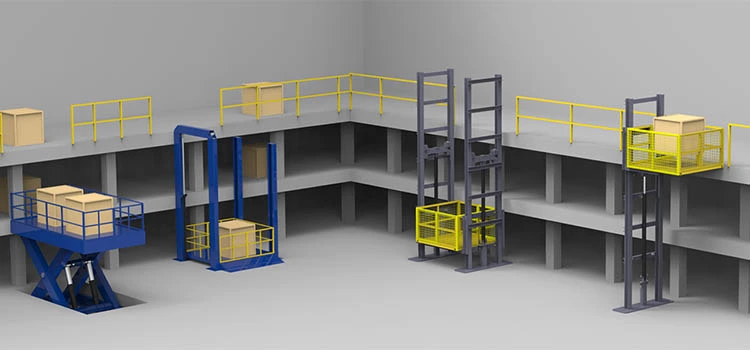We Maintain Lifts with Precision: Ensuring Safety and Efficiency
We Maintain Lifts with Precision: Ensuring Safety and Efficiency
Blog Article
Looking Into the Globe of Elevators: Usual Issues Encountered by Numerous Lift Mechanisms
As we browse with the upright transportation systems of modern buildings, elevators stand out as a crucial part of our day-to-day lives. Nevertheless, behind their smooth procedure exists a globe of elaborate mechanisms that can in some cases encounter challenges. From hydraulic elevators to traction systems and machine-room-less styles, each lift kind features its set of typical issues. Recognizing these challenges is important for making certain the smooth performance of these important systems. Allow's discover the intricacies that underlie the procedure of elevators and the prospective problems that can emerge, losing light on the detailed internet of lift systems.
Hydraulic Elevators
Hydraulic lifts, usually chosen for low-rise structures, use fluid stress to regulate the movement of the elevator auto (lift repair companies). This system entails a hydraulic pump pushing oil right into a cyndrical tube, triggering the elevator to relocate the desired direction. While hydraulic elevators are understood for their smooth and peaceful operation, they do come with their own collection of usual concerns
One widespread issue with hydraulic elevators is oil leakage. Furthermore, problems with the control system, such as defective valves or a malfunctioning pump, can trigger interruptions in the lift's activity.
Routine upkeep and punctual repairs are necessary to guarantee the smooth performance of hydraulic elevators. By addressing these usual concerns proactively, building owners can reduce downtime and ensure the security and performance of their vertical transportation system.
Grip Lifts
When thinking about vertical transport systems in buildings, another usual type apart from hydraulic elevators is the traction elevator. Grip lifts run making use of a system of ropes and counterweights that move the elevator vehicle by clutching onto the hoist ropes. This mechanism permits for smoother and much faster upright transportation compared to hydraulic systems.
Among the common problems encountered by grip elevators is rope wear. The continuous movement of the ropes within the grip system can lead to damage with time, possibly creating the lift to malfunction or end up being risky for use. Routine inspections and upkeep of the ropes are vital to ensure the lift's proper performance and security.
Another issue that traction lifts might experience is connected to the control system. Issues with the control system can bring about problems such as unpredictable movement, hold-ups in action times, and even full shutdowns. Normal screening and upkeep of the control system are important to stop such concerns and make sure the lift's integrity.
Machine-Room-Less (MRL) Elevators

Among the key parts of MRL lifts is the compact gearless traction maker that is mounted within the hoistway. This maker successfully drives the lift vehicle without the need for cumbersome equipment discovered in conventional traction elevators. Furthermore, MRL lifts typically use a weight system to stabilize the cars and truck, additional boosting their power efficiency.
Regardless of their benefits, MRL elevators might deal with difficulties associated with maintenance and repair work as a result of the constrained space for equipment setup. Ease of access for servicing elements within the shaft can be restricted, needing specialized training for professionals. Appropriate upkeep timetables and routine evaluations are crucial to guarantee the continued smooth operation of MRL lifts.
Overloading and Weight Limitation Issues
Overwhelming and weight limitation issues are critical concerns in lift operations. Lift producers style raises with details weight capabilities to ensure guest security and tools longevity.
When lifts are overloaded, it places too much strain on the motor, cords, and other parts, potentially causing malfunctions or malfunctions. Safety and security devices such as sensing units and overload sensing units remain in place to prevent elevators from relocating if they identify excess weight. Furthermore, exceeding weight restrictions can result in enhanced power usage and wear lift repair near me and tear on the lift system.
To reduce overwhelming problems, constructing managers need to prominently show weight limitations in elevators and enlighten residents on the relevance of adhering to these restrictions - lift repair companies. Normal upkeep checks by qualified specialists can likewise aid make sure that lifts are running within risk-free weight specifications. By resolving overloading and weight limit problems proactively, structure owners can enhance elevator safety and performance
Electric System Failings
Exceeding weight limits in elevators can not only lead to mechanical problems however also potentially add to electric system failings within the lift framework. Electric system failures are an essential worry in elevator procedure, as they can trigger unanticipated shutdowns, malfunctions, or also security risks.
Additionally, power rises or fluctuations in the electric supply can also interfere with the elevator's operation, impacting its performance and safety. These electric disturbances can harm delicate elevator parts such as control board, circuit boards, or sensing units, leading to system failings. Regular upkeep and inspections are important to determine and resolve potential electric concerns without delay, making sure the secure and efficient operation of elevator systems. By sticking to weight restrictions and carrying out regular electrical system checks, building proprietors can reduce the risk of electrical failings in elevators.
Verdict

Hydraulic lifts, frequently favored for low-rise buildings, utilize fluid stress to control the activity of the elevator cars and truck.When taking into consideration vertical transportation systems in structures, one more typical type apart from hydraulic lifts is the grip disabled platform lifts prices uk elevator. Traction elevators operate utilizing a system of ropes and weights that relocate the we maintain lifts lift car by clutching onto the hoist ropes. Unlike traditional elevators that call for a separate maker area to house the equipment, MRL elevators incorporate most of the components within the shaft, eliminating the demand for a specialized maker space.In verdict, lifts face common concerns such as hydraulic breakdowns, grip system failings, and electrical system problems.
Report this page